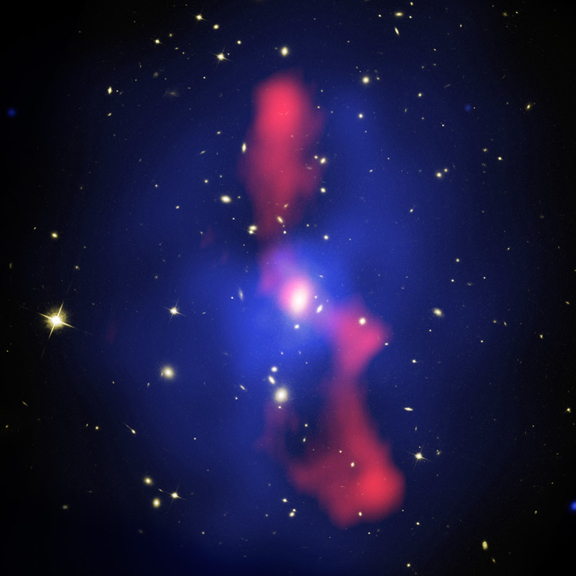

Meet MS0735.6+7421: a galaxy cluster located at a distance of 2.6 billion light-years from Earth, in the constellation of Camelopardalis. Like all clusters, MS0735.6+7421 (we’ll call it MS0735 for short) is a loose collection of galaxies that are held together by the force of gravity.
The final product above is a composite of images taken by three different observatories, superimposed for effect. The first—taken with Hubble’s Advanced Camera for Surveys—shows the region in optical light. The second, from the Chandra X-Ray Observatory, makes note of the superheated gases that pervade intergalactic space. Since the gas is heated to such high temperatures—reaching nearly 50 million degrees—it is diffuse and glows brightly in x-ray light, which can be seen in blue here. The third dataset came from the Very Large Array. From NASA:
The X-ray portion of the image shows enormous holes or cavities in the gas, each roughly 640,000 light-years in diameter — nearly seven times the diameter of the Milky Way. The cavities are filled with charged particles gyrating around magnetic field lines and emitting radio waves shown in the red portion of image taken with the Very Large Array telescope in New Mexico in June 1993.
The cavities were created by jets of charged particles ejected at nearly light speed from a supermassive black hole weighing nearly a billion times the mass of our Sun lurking in the nucleus of the bright central galaxy. The jets displaced more than one trillion solar masses worth of gas. The power required to displace the gas exceeded the power output of the Sun by nearly ten trillion times in the past 100 million years.